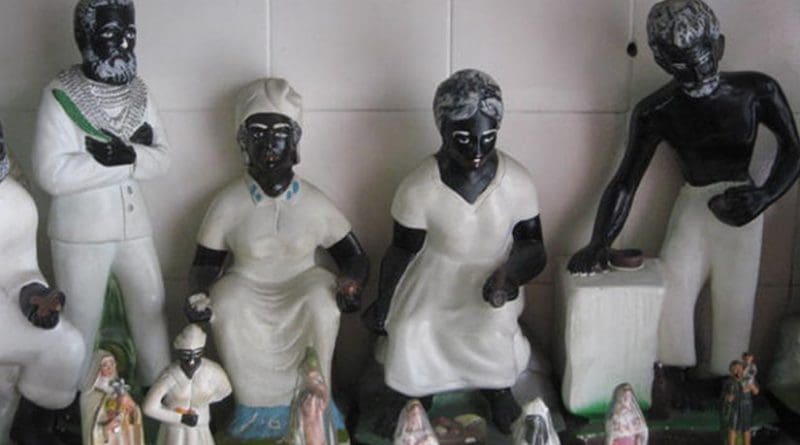Brazil: Umbanda, Religion And Resistance
By Paolo Moiola*
Above the front door, on the green wall, the inscription: “Umbanda São Jorge Store” is written. Inside, the shelves are filled with incense and natural products for all kinds of purposes (from love to money), and statues of various sizes with the features of Catholic saints or other individuals.
In Floriano, a small town in the state of Piauí, in the northeast, there are two shops that sell items for Umbanda. However, according to official data or even the answers of people, the followers of this religion in Brazil would be very few.
Nor is it easy to identify a terreiro, where the Umbanda ceremonies are held. Ademar José Soares, a 76-year-old man with more energy than that expected for his age, organizes the Bumba-meu-boi, a notable festival from old tradition, in his home located a few meters from the shore of the Paranaíba river. Soares is a pai-de-santo, responsible for an Umbanda terreiro.
A syncretic religion par excellence, the Umbanda faith is considered monotheistic — God is called Olurum or Zâmbi —, even though the belief in orixás (of African origin) and the elements of nature (inherited from indigenous pantheism) might suggest otherwise. They sing Our Father and Hail Mary prayers. Umbanda even has a founding date and place: 1908 in Rio de Janeiro.
Religious prejudice
Either because of the special rituals or the type of followers, or even because of misinterpreted historical legacies — slavery, in particular —, Umbanda and Afro-Brazilian religions in general are still viewed with suspicion. Or even with hatred by some Christian denominations.
“For being trance religions, of the cult of spirits and in some cases of animal sacrifices, they have been associated with stereotypes, such as ‘black magic’, superstitions of ignorant people, evil practices,” wrote historian Alessandra Amaral Soares Nascimento in the article “Candomble and Umbanda: religious practices of black identities in Brazil,” published in the Brazilian Sociology of Emotion Magazine in December 2010.
African cults were brought to this Latin American country by slaves during a period of over 300 years. In Brazil, the practice of slavery lasted, at least officially, from 1559 to 1888.
As Soares Nascimento says, “the slave had to be baptized within a maximum of five years after his arrival in Brazil.” It was essentially the practical application of “Cuius regio, eius religio,” that is, the obligation of the slave to conform to the master’s religion.
Form of resistance
Afro-Brazilian religions developed as a form of “resistance” to the impositions of the white masters and as an affirmation of their own identity. Umbanda is an evolution in light of the pride of “being Brazilian,” a mixture of white, black and indigenous.
According to Reginaldo Prandi, another scholar and specialist in Afro-Brazilian religions, “silently, today we are part of a real slaughter of Afro-Brazilian religions.” A very serious matter, says the professor at the University of São Paulo, because the religions’ contribution “to the various areas of Brazilian culture is very rich.”
Apart from the thoughts of scholars, it is worth remembering the words of Gilberto Gil, one of the most notable Brazilian musicians, who writes in the verse of a song: “When the peoples of Africa arrived here / they did not have freedom of religion. / They adopted the Lord of Bonfim / both as resistance and as surrender.”
*In collaboration with bio-pedagogist Rosa Maria Duarte Veloso.

